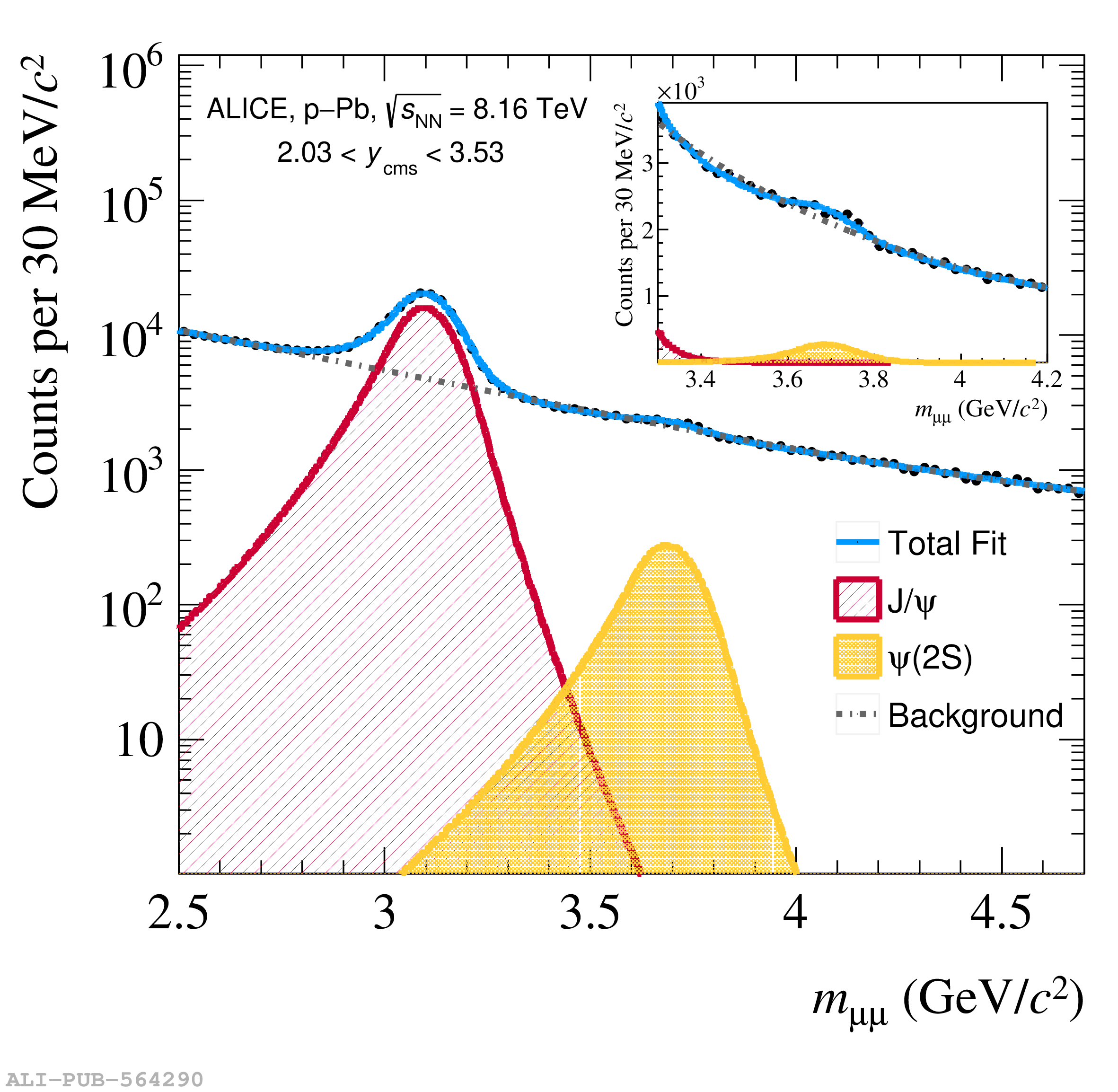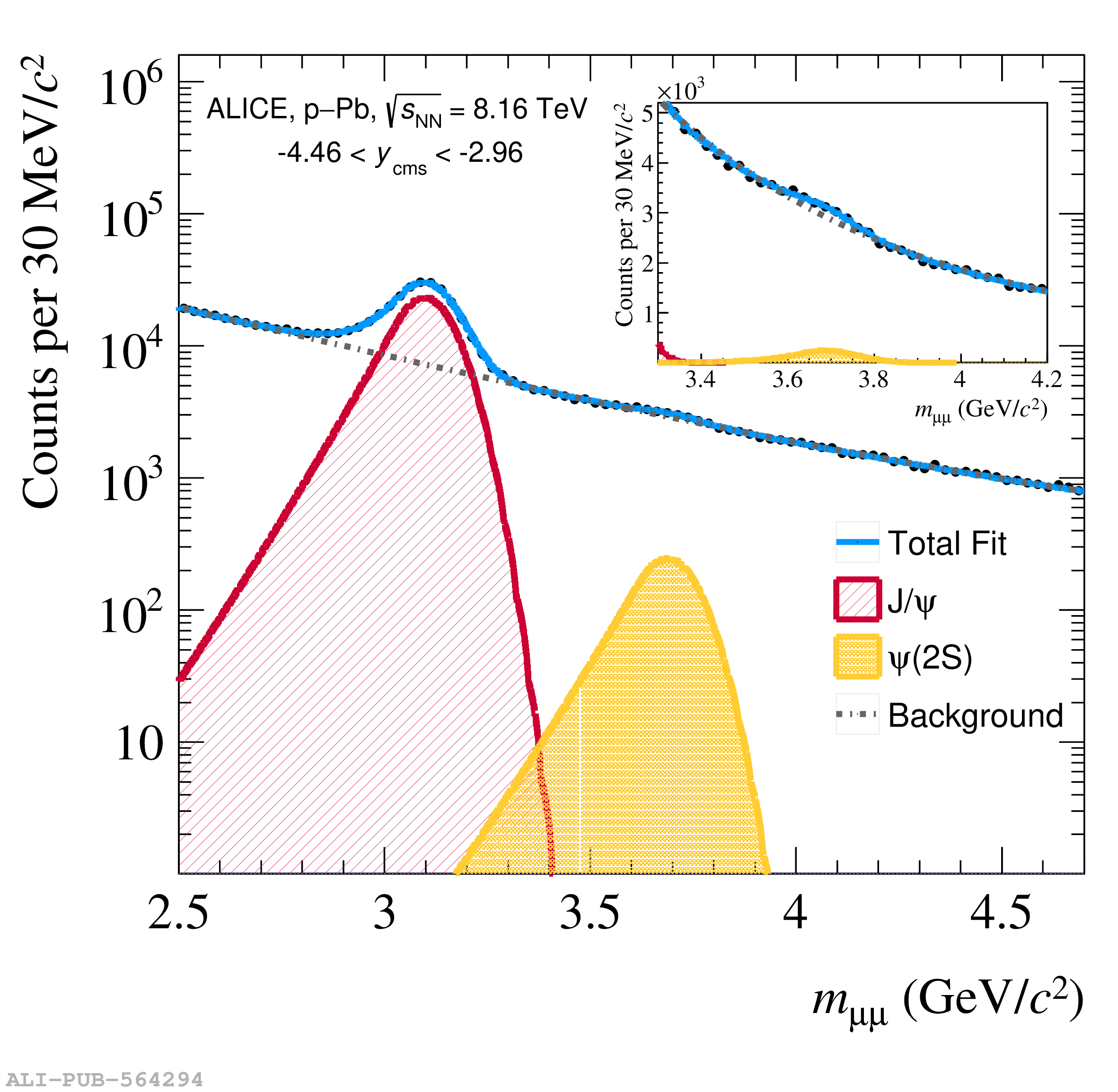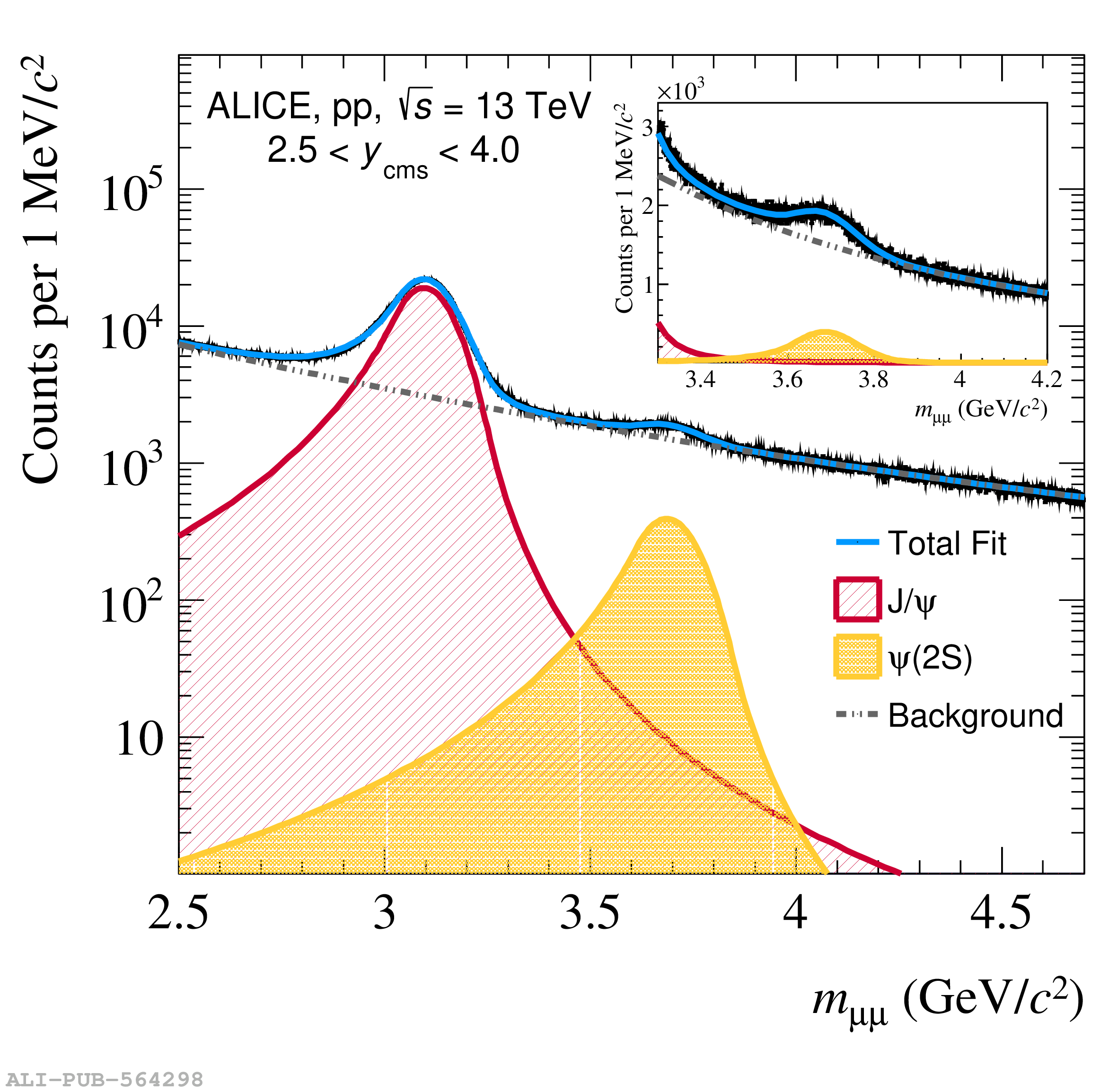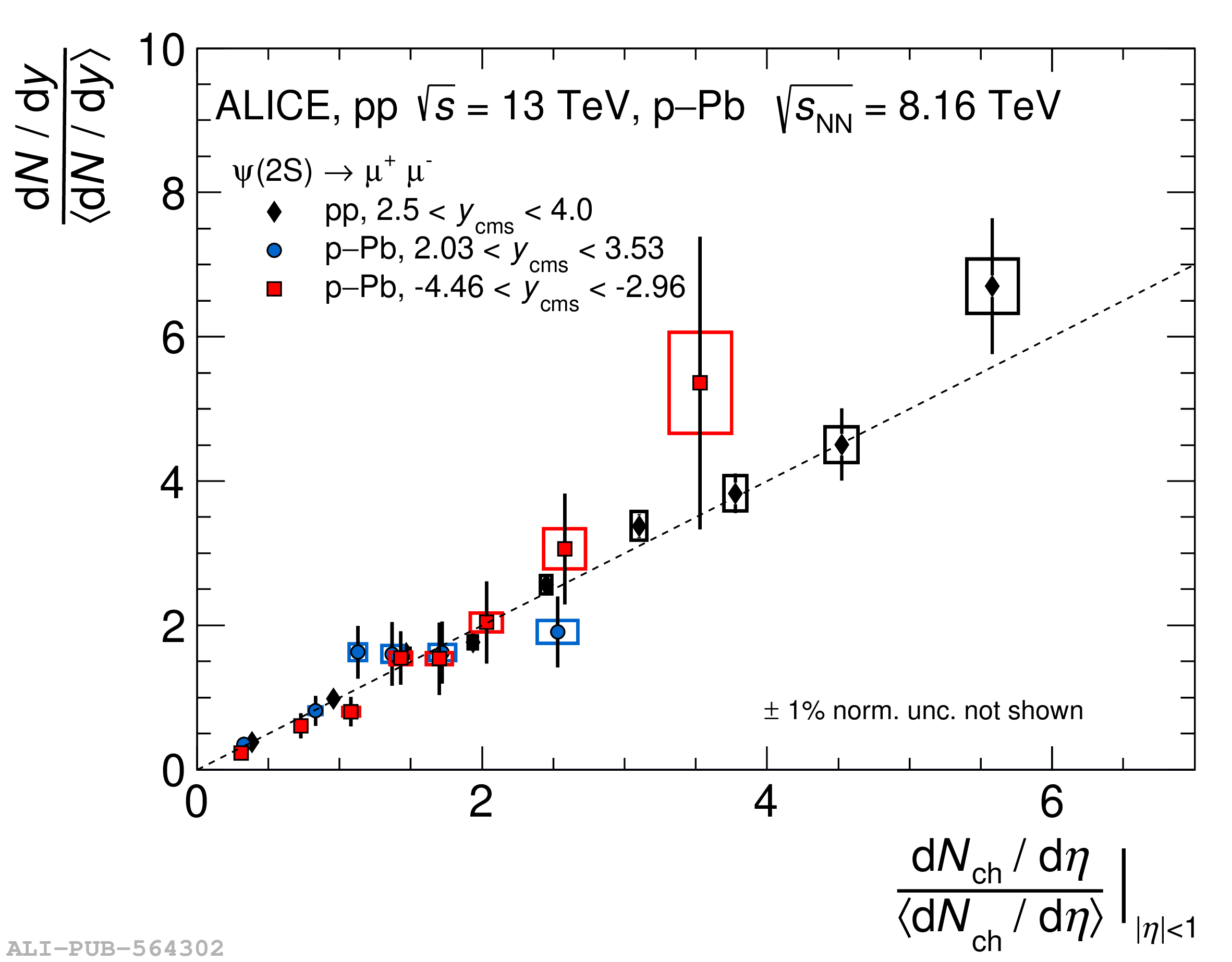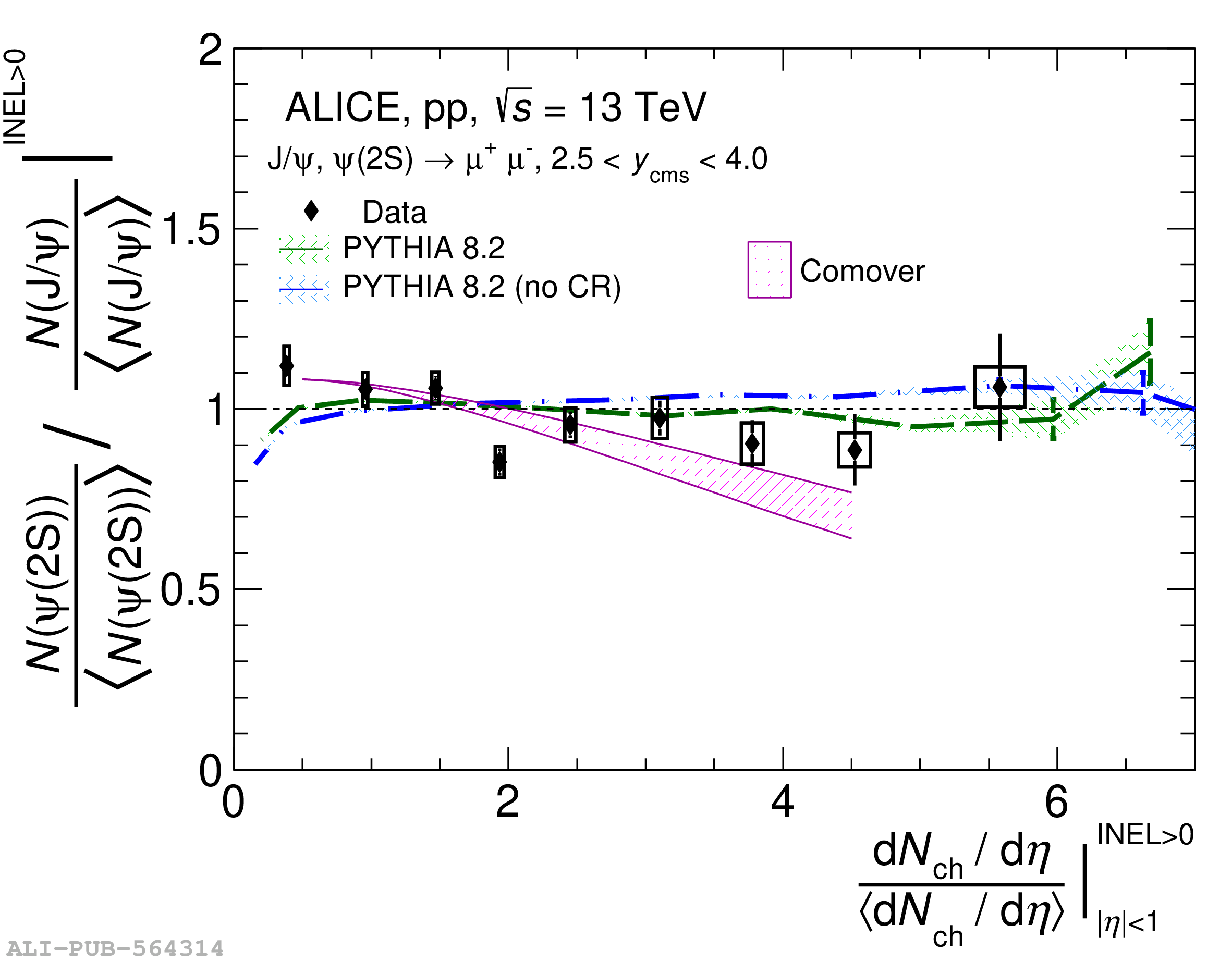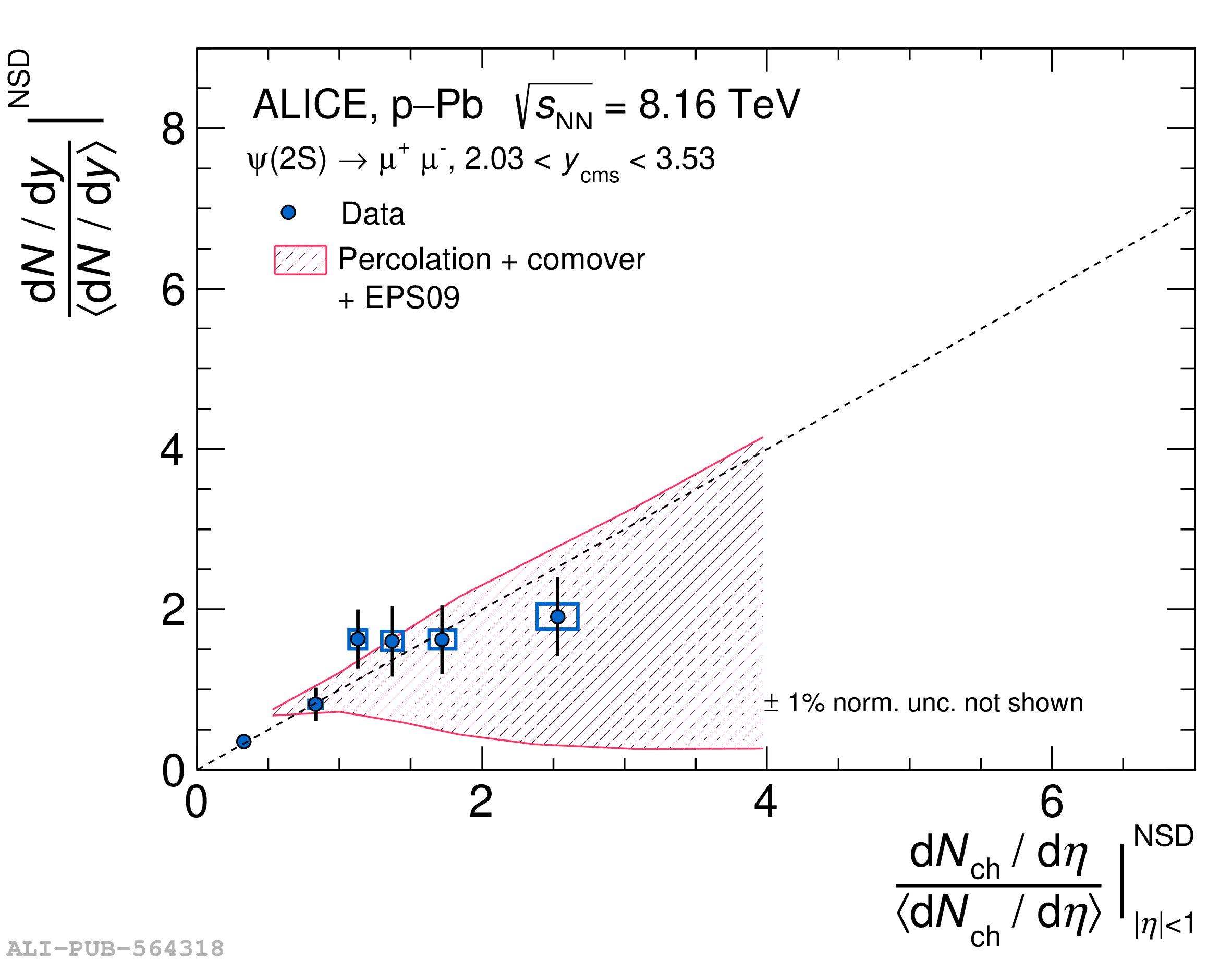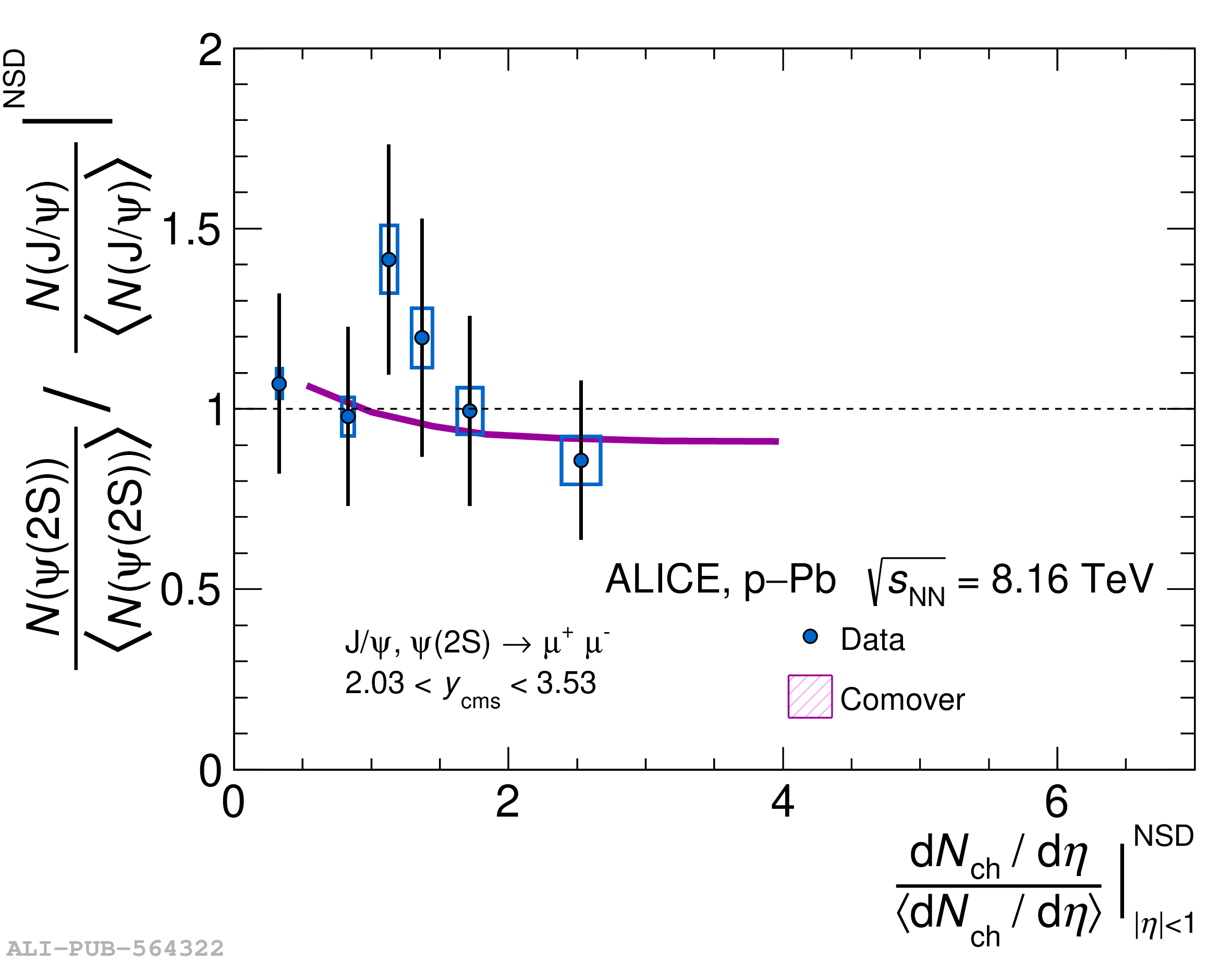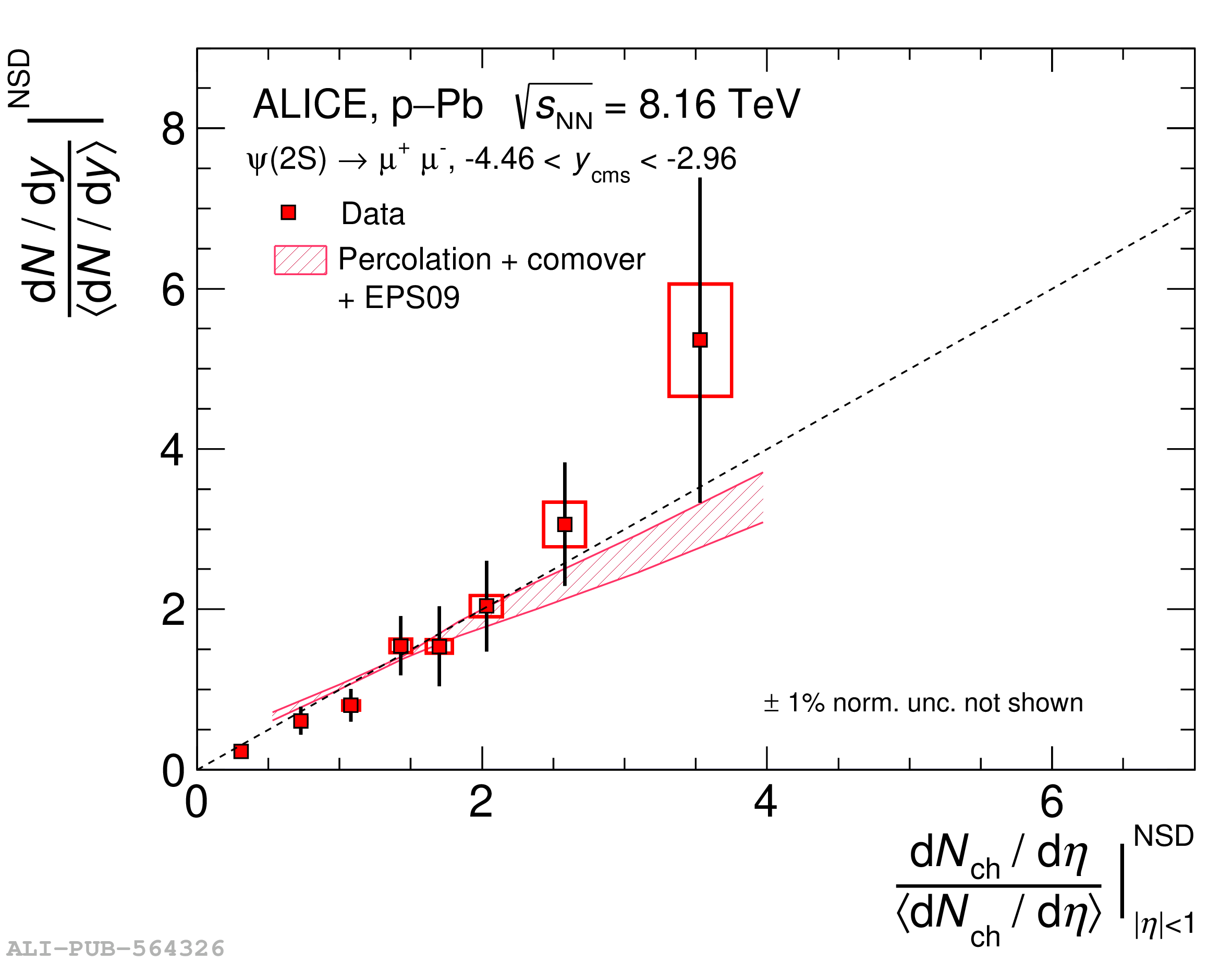Production of inclusive charmonia in pp collisions at center-of-mass energy of $\sqrt{s}$ = 13 TeV and p-Pb collisions at center-of-mass energy per nucleon pair of $\sqrt{s_{\rm NN}}$ = 8.16 TeV is studied as a function of charged-particle pseudorapidity density with ALICE. Ground and excited charmonium states (J/$\psi$, $\psi$(2S)) are measured from their dimuon decays in the interval of rapidity in the center-of-mass frame $2.5 <~ y_{\rm cms} <~ 4.0$ for pp collisions, and $2.03 <~ y_{\rm cms} <~ 3.53$ and $-4.46 <~ y_{\rm cms} <~ -2.96$ for p-Pb collisions. The charged-particle pseudorapidity density is measured around midrapidity ($|\eta|<~1.0$). In pp collisions, the measured charged-particle multiplicity extends to about six times the average value, while in p-Pb collisions at forward (backward) rapidity a multiplicity corresponding to about three (four) times the average is reached. The $\psi$(2S) yield increases with the charged-particle pseudorapidity density. The ratio of $\psi$(2S) over J/$\psi$ yield does not show a significant multiplicity dependence in either colliding system, suggesting a similar behavior of J/$\psi$ and $\psi$(2S) yields with respect to charged-particle pseudorapidity density. Results for the $\psi$(2S) yield and its ratio with respect to J/$\psi$ agree with available model calculations.
JHEP 06 (2023) 147
HEP Data
e-Print: arXiv:2204.10253 | PDF | inSPIRE
CERN-EP-2022-064
Figure group

